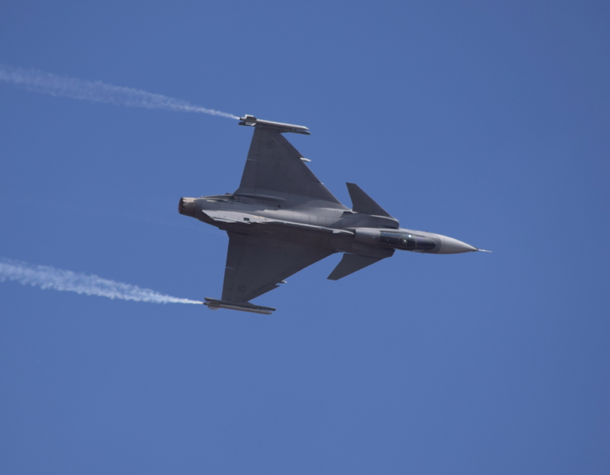Sweden’s Saab — one of the unsuccessful bidders on the MMRCA contract eventually won by the Rafale — is pursuing its campaign to convince India to select the Gripen E as the solution for its light single-engine fighter requirement, thought to involve around 200-250 aircraft.
Saab is underlining the Gripen E’s modular avionics architecture, comprising mission-related tactical elements on the one hand, and flight-critical systems on the other. The Swedish firm claims that this unique architecture has the advantage of allowing changes and upgrades to the mission system without affecting flight-critical systems.
Technology transfer and local production will clearly be key in winning the Indian contract, hence Saab’s “Team Up with India” slogan. The company is basing its offer on the solution developed for Brazil — the only export customer for the Gripen E to date.
In addition to a Gripen final assembly facility, Saab and local partner Embraer have set up a Gripen Design and Development Network (GDDN) as the local hub for technology transfer and fighter development. For India, Saab is proposing to produce an initial batch of aircraft in Sweden (as it is doing for Brazil), while local production facilities are being built.
The Saab offer includes the creation of a full manufacturing facility; transfer of state-of-the-art technology; setting up of an aerospace eco-system in India; creation of a local supplier base of ancillary systems; employment of a well-trained Indian workforce. Engineers would be trained in Sweden.
Separately, Saab is proposing the Gripen M in response to the Indian Navy requirement for a carrier-borne fighter.
At the show, Saab is also highlighting the “low-risk” sensor package it is offering for the Indian Tejas Mk1A light combat aircraft. The package consist of a Saab Airborne Electronically Scanned Array (AESA) radar closely integrated with a compact electronic warfare suite using Gallium Nitride based AESA technology.
The Saab offer comes in response to India’s plan to add an AESA radar and electronic warfare capability to the Tejas, which is already in service in baseline configuration with the Indian Air Force. India’s Defence Research and Development Organisation (DRDO) is also working on a home-grown AESA solution for Tejas.

